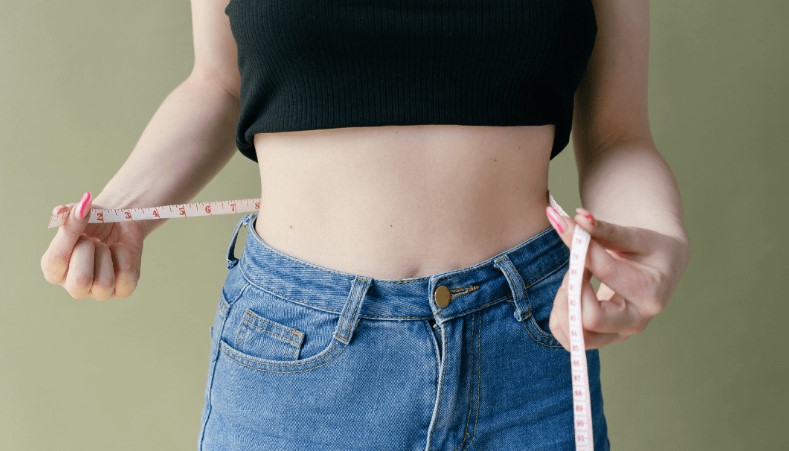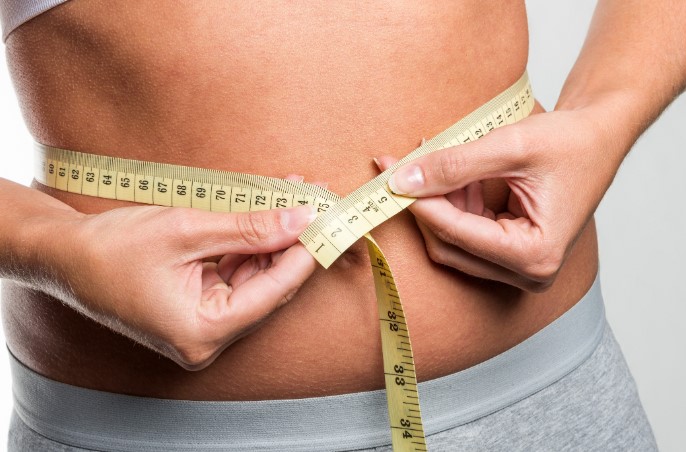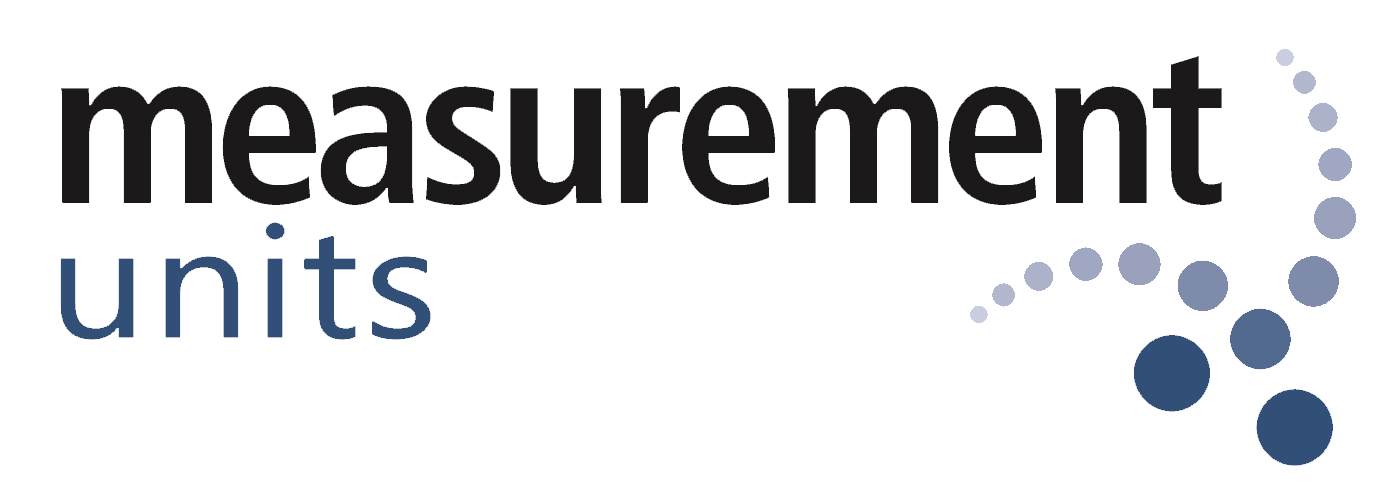Measuring your waist is a simple yet valuable tool for assessing your overall health and fitness. In the UK, waist measurement is often used in conjunction with other health indicators, such as BMI (Body Mass Index), to assess your risk of developing certain health conditions. Additionally, knowing your waist size is essential for finding well-fitting clothes and ensuring your comfort.
This comprehensive guide will walk you through the step-by-step process of measuring your waist accurately, provide insights into the significance of waist measurement in the UK context, and offer valuable tips for maintaining a healthy waistline.
Why You Should Measure Your Waist
Health Reasons
Measuring your waist is about more than just buying the right clothes—it’s an important health marker. Medical research has shown that excess abdominal fat increases the risk of serious health problems like heart disease, type 2 diabetes, and hypertension. According to the NHS, men with a waist size over 94 cm (about 37 inches) and women with a waist size over 80 cm (about 31.5 inches) are at a higher risk for these conditions.
Unlike BMI, which measures general body fat, waist circumference gives a more specific insight into how much fat is stored around your organs. This visceral fat is particularly dangerous because it releases toxins into your bloodstream that can negatively affect your heart, liver, and other vital organs.
Clothing Fit
When it comes to clothing, especially trousers, skirts, and dresses, waist size is often the most critical measurement. Knowing your waist size allows you to shop for clothing with more accuracy, especially when it comes to UK sizing. Men’s and women’s clothing sizes in the UK are often based on waist measurements, typically in inches. A man’s size 32 trouser, for example, corresponds to a 32-inch waist.
By knowing your waist size, you can avoid the hassle of returning clothes that don’t fit and make online shopping much easier. Plus, if you’re shopping internationally, knowing your waist measurement helps with size conversions, which vary between countries.
For Fitness Goals
Waist measurement is also a helpful tool for tracking fitness progress. Many people focus solely on their weight when trying to get fit, but measuring your waist is an excellent way to monitor fat loss, even when the scales don’t seem to be moving. This is especially true for individuals looking to slim down their midsection or build muscle in other areas of the body.
Tools You Need to Measure Your Waist
Soft Measuring Tape
The best tool for measuring your waist is a soft, flexible measuring tape, often used in sewing. These tapes are ideal because they’re easy to wrap around your body and can be held snugly without compressing your skin. You can find soft measuring tapes in most health and fitness stores or online retailers like Amazon UK and Boots.
When choosing a measuring tape, look for one that includes both inches and centimeters. In the UK, clothing sizes typically use inches, but medical and fitness guidelines may use centimeters, so it’s helpful to have both options.
Step-by-Step Guide to Measure Your Waist
Preparation
Before you start measuring, it’s essential to set yourself up for accuracy. Wear light clothing or no clothing around your waist area to avoid adding extra bulk to the measurement. Loose or bulky fabrics can distort the measurement, leading to incorrect results.
Next, stand up straight with your feet about hip-width apart and your arms relaxed at your sides. Maintain a natural posture—don’t stand too rigid or overly relaxed, as this can affect the outcome.
Find the Correct Position
To measure your waist correctly, you need to locate your natural waistline. The waist is typically the narrowest part of your torso, located just above your belly button and below your rib cage. Some people mistakenly measure lower, near the hips, but this won’t give you the accurate waist measurement needed for health or clothing purposes.
To make it easier, you can place your hands on your hips and feel for the top of your hip bones and the bottom of your ribs. The waist is the midpoint between these two landmarks.
Wrap the Tape
Once you’ve found your natural waist, take the soft measuring tape and wrap it around your waistline. Make sure the tape is level all the way around and doesn’t twist or bunch up. The tape should sit snugly against your skin without being too tight. You should be able to fit a finger between the tape and your skin for an accurate measurement.
Ensure that the tape is positioned horizontally and isn’t dipping down or pulling up at the back or sides. This will help you avoid an inaccurate measurement.

Image source: fashiondiscounts.uk
Take the Measurement
With the tape wrapped around your waist, look at the point where the tape overlaps the zero mark to see your waist measurement. It’s best to record the measurement in both inches and centimetres to cover all your bases, especially for UK clothing sizes that use inches.

Image source: www.evergreen-life.co.uk
Tips for Accurate Waist Measurement
- Measure in the morning: Your waist size can fluctuate throughout the day due to eating and drinking. For the most accurate measurement, take your waist measurement in the morning before eating.
- Don’t hold your breath: It can be tempting to suck in your stomach to get a smaller number, but this will give you a false reading. Breathe out normally when taking your measurement.
- Take multiple measurements: If you’re unsure whether you’ve measured correctly, take multiple measurements and average them out. This will help ensure accuracy.
- Track changes: If you’re measuring your waist for fitness purposes, keep track of your waist size over time. This will give you a clear picture of your progress.
Common Mistakes to Avoid
Even though measuring your waist seems simple, there are a few common mistakes that can lead to inaccurate results. Here’s what to avoid:
- Wrapping the tape too tightly: If the tape is too tight, you’ll get a smaller measurement than your actual waist size. The tape should be snug but not compressing your skin.
- Measuring at the wrong point: Some people measure too high or too low, near the hips. Make sure you’re measuring at your natural waistline, which is usually just above your belly button.
- Measuring over thick clothing: Wearing heavy clothes like jeans or sweaters can add extra inches to your waist measurement. Always measure against bare skin or over light clothing for accuracy.
- Holding your breath: Don’t hold your breath or suck in your stomach when measuring, as this will lead to an inaccurate reading.
What Does Your Waist Size Mean?
Healthy Waist Size (UK Guidelines)
The NHS provides specific guidelines for what constitutes a healthy waist size. For men, a waist size of 94 cm (37 inches) or more is considered to increase the risk of health problems like heart disease and type 2 diabetes. For women, a waist size of 80 cm (31.5 inches) or more is seen as a higher risk. If your waist measurement exceeds these guidelines, it may be worth discussing with a healthcare professional for advice on managing your weight and reducing abdominal fat.
Clothing Size Chart
In the UK, waist measurements are directly linked to clothing sizes. Here’s a quick reference chart for UK men’s and women’s clothing sizes based on waist measurements:
| Waist Size (Inches) | Men’s UK Size | Women’s UK Size |
|---|---|---|
| 28-30 | 28-30 | 8-10 |
| 32-34 | 32-34 | 12-14 |
| 36-38 | 36-38 | 16-18 |
| 40-42 | 40-42 | 20-22 |
Conclusion
Measuring your waist is a simple but effective way to monitor both your health and your clothing size. By following the steps outlined in this guide, you can ensure you get an accurate measurement every time, helping you make better choices for your wardrobe and your overall health.
Whether you’re tracking your fitness progress, buying new clothes, or checking your health risks, knowing how to measure your waist is an essential skill. Keep this guide handy, and make waist measurement a regular part of your routine.
Frequently Asked Questions (FAQs)
To measure your waist size, wrap a soft measuring tape around your natural waistline, which is typically just above your belly button. Make sure the tape is snug but not tight, and keep it level all the way around. Take the measurement in inches or centimetres, making sure you’re relaxed and breathing normally.
According to NHS guidelines, measure your waist by placing a tape measure around your middle, just above your belly button and below your ribs. Ensure the tape is snug but not too tight. Men should aim for a waist size below 94 cm, and women should aim for less than 80 cm to reduce health risks.
A UK size 8 typically corresponds to a waist measurement of around 26 inches (66 cm). However, sizes may vary slightly depending on the brand.
A general guideline is that your waist should measure less than half your height. For example, if you’re 5’6″ (66 inches), your waist should ideally be under 33 inches for optimal health. This is often used as a benchmark for reducing health risks.
